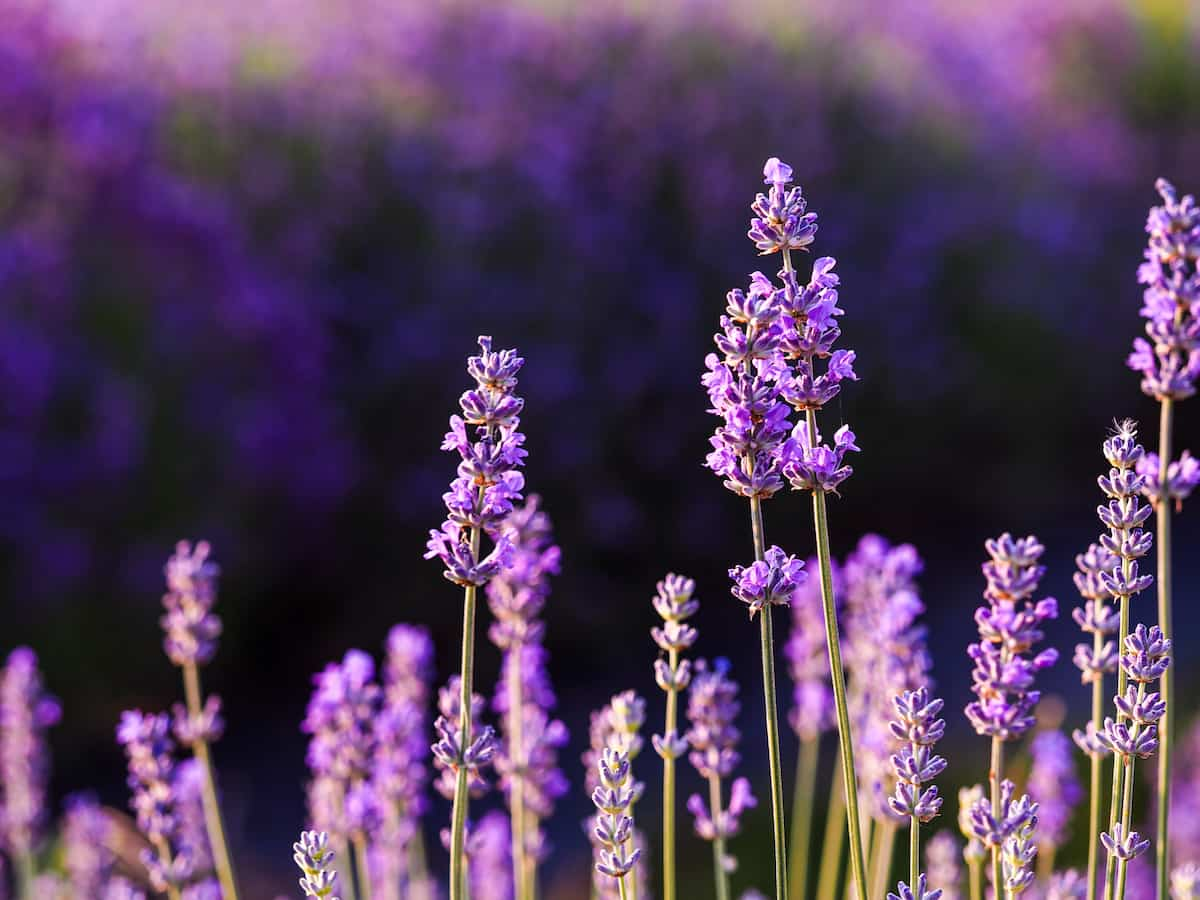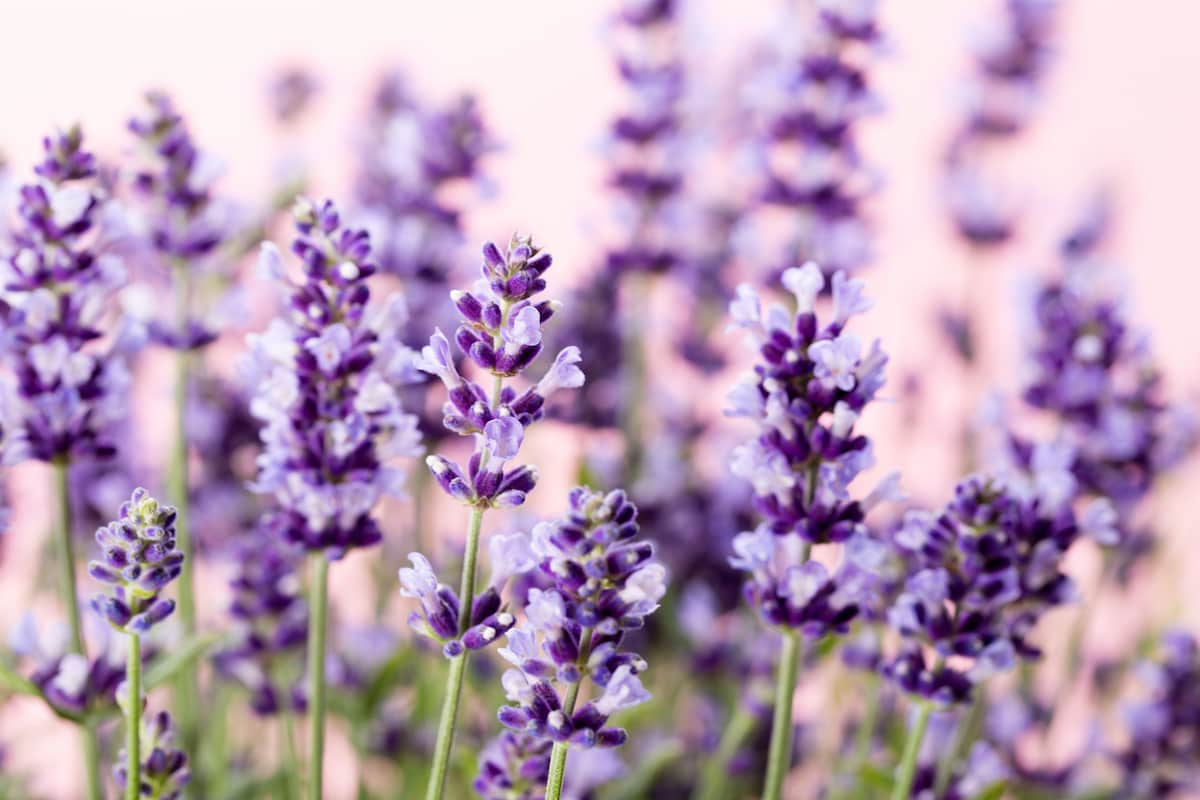Growing lavender from cuttings is an easy and cost-effective way to propagate new plants. Lavender cuttings can be taken from a mature plant during the spring or early summer when the plant is actively growing.

How to Grow Lavender from Cuttings
Materials Needed
- A mature lavender plant
- Clean, sharp pruning shears or scissors
- Rooting hormone powder or liquid
- A pot or container with drainage holes
- Potting soil
- Clear plastic bags or plastic wrap
- Watering can or spray bottle
- Grow lights (optional)
Select a Healthy Lavender Plant
Choose a healthy lavender plant to take cuttings from. Look for a plant free from pests and diseases and has strong, healthy growth. If you want to start a new plant from a clipping, wait until the plant is actively developing in the spring or summer.
Take the Cuttings
Take cuttings from the plant using clean, sharp pruning shears or scissors. Cuttings should be 4-6 inches long and taken from new growth at the tips of the plant. Make sure to remove any flowers or flower buds from the cutting.
Prepare the Cuttings
Leave only a few leaves at the top of the slice and strip the leaves from the lowest two inches. To help the root growth, dip the cut end in rooting hormone powder or liquid.
Plant the Cuttings
Make a hole in the container of potting soil. Insert the cutting into the hole and gently press the soil around the stem to secure it in place. Water the soil thoroughly, making sure the soil is evenly moist but not waterlogged.
Cover the Cuttings
Cover the pot or container with a clear plastic bag or plastic wrap to create a humid environment for the cuttings. This will help prevent the cuttings from drying out while rooting. Place the pot or container in a warm, bright location without direct sunlight.
Water and Care for the Cuttings
Keep the soil moist but not waterlogged by watering the cuttings as needed. You can use a watering can or spray bottle to water the cuttings. Avoid letting the soil dry out completely. If the leaves start to wilt, mist them with water to help them recover.
Monitor the Cuttings
Check the cuttings regularly for signs of growth. After a few weeks, the cuttings should start to produce new growth, indicating that they have rooted successfully. Once the cuttings have rooted, you can remove the plastic bag or wrap it and place the pot or container in a bright, sunny location.
Transplant the Cuttings
Once the cuttings have rooted and produced new growth, they can be transplanted into individual pots or planted directly in the ground. When transplanting, handle the cuttings gently to avoid damaging the roots.
In case you missed it: Frequently Asked Questions About Lavender Farming

Care for the New Lavender Plants
Sunlight: Lavender plants require full sun to thrive, so make sure to plant them in a location that receives at least 6-8 hours of direct sunlight daily. If you live in a hot climate, your plants may benefit from afternoon shade to prevent sunscald.
Watering: Lavender plants prefer well-draining soil that is moist but not waterlogged. Water your new lavender plants deeply once or twice a week, depending on the weather conditions and soil moisture levels. Be sure to water the plants at the base, avoiding the foliage to prevent the development of fungal diseases. You may need to water your plants more frequently during hot and dry weather.
Fertilizing: Lavender plants do not require much fertilization, but a balanced fertilizer can be applied monthly during the growing season to encourage healthy growth and flowering. Avoid over-fertilizing, as this can cause the plants to produce excessive foliage at the expense of flowers.
Pruning: Pruning lavender plants is essential for maintaining their shape and promoting healthy growth. After the first year, prune your plants in the spring to remove any dead or damaged branches and encourage new growth. Lavender plants can also be pruned after blooming to prevent them from becoming too woody and to encourage additional blooms.
Pests and Diseases: Lavender plants are generally hardy and disease-resistant but can be susceptible to certain pests and diseases. Look for common pests such as aphids and spider mites, and treat them promptly with insecticidal soap or neem oil. To prevent fungal diseases, avoid overwatering and make sure your plants have good air circulation.
Harvest the Lavender Flowers
Once the lavender plants start to produce flowers, you can harvest the blooms in various ways. Cut the stems above the leaves and hang them upside down to dry. You can use the dried flowers in sachets, potpourri, or to make essential oil.
Protect Your Lavender Plants
The most common causes of lavender plant death are overwatering, poor drainage and root rot. Lavender plants require well-draining soil, and overwatering or leaving the roots in standing water can cause the roots to rot and the plant to die. Lavender plants can also be affected by fungal diseases, pests such as aphids and spider mites, and extreme temperatures. In addition, planting lavender in the wrong location or soil type, such as heavy clay soil or shade, can also lead to plant death.
To prevent your lavender plants from dying, plant them in well-draining soil, avoid overwatering, and provide proper sunlight and air circulation. Regular pruning and maintenance can also help to keep the plants healthy and prevent disease and pest problems. Lavender plants are hardy and can survive winter, but extreme cold or wet conditions can damage them. To protect the plants during the winter, cover them with a layer of mulch or straw, or move them indoors to a cool, bright location.
In case you missed it: Frequently Asked Questions About Curry Leaf Farming

Conclusion
Growing lavender from cuttings is an easy and cost-effective way to propagate new plants. With a little care and patience, you can successfully root lavender cuttings and grow healthy, beautiful plants that will provide you with fragrant flowers and foliage for years to come.
Proper care of your new lavender plants involves providing them with well-draining soil, full sun, and regular watering and fertilization. Pruning, pest control, and winter protection are also crucial for maintaining the health and longevity of your plants. By following these steps and properly caring for your lavender plants, you can enjoy the many benefits these beautiful and fragrant plants offer.
- Feed Your Flock for Less: Top 10 Tips to Save on Chicken Feed
- Ultimate Guide to Ossabaw Island Hog: Breeding, Raising, Diet, and Care
- Hatching Answers: The Top 10 Reasons Your Chickens Aren’t Laying Eggs
- Eggs and Economics: Breaking Down the Cost of Raising Backyard Chickens
- Defend Your Greens: Proven Methods to Keep Iguanas Out of Your Garden
- Ultimate Guide to Cinnamon Queen Chicken: A Comprehensive Guide for Beginners
- Ultimate Guide to California Tan Chicken: Breeding, Raising, Diet, Egg-Production and Care
- Ultimate Guide to Marsh Daisy Chicken: Breeding, Raising, Diet, and Care
- 10 Types of Chicken Farming Businesses You Can Start for Profits